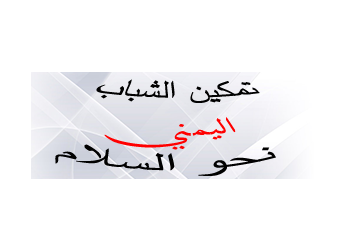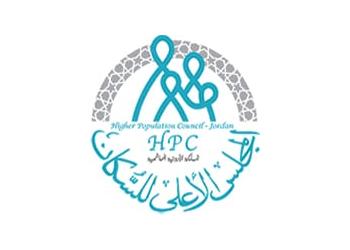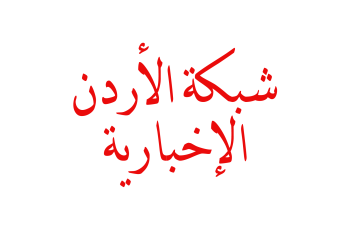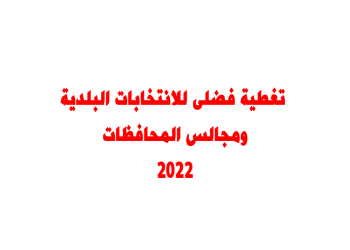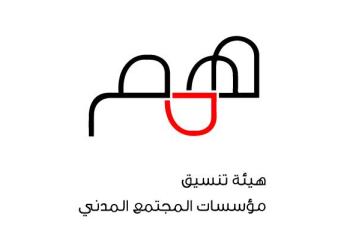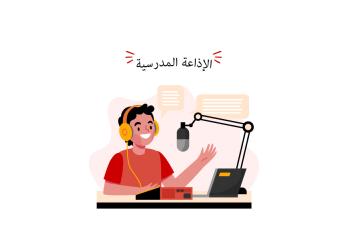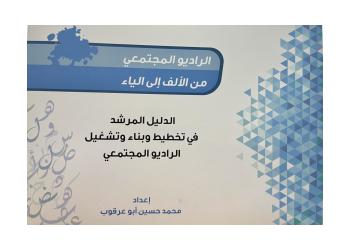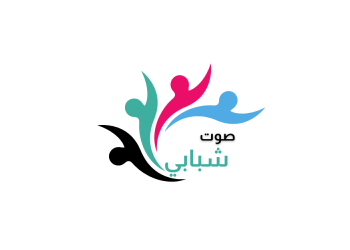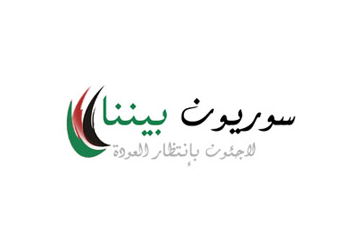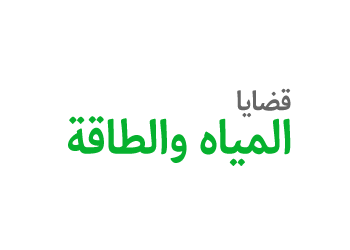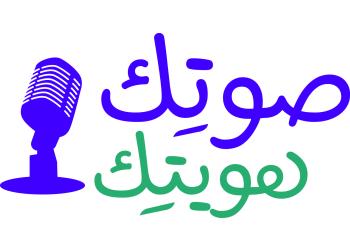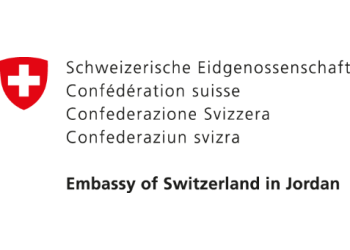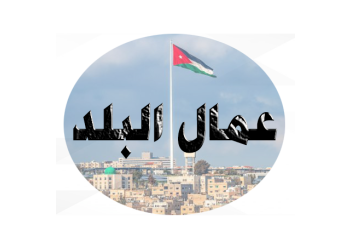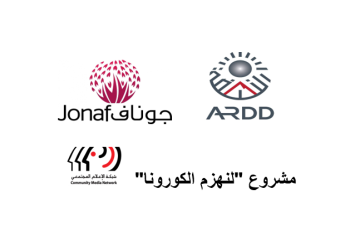
Children of the Landfill
Tala Ayoub and Ahmad Malkawi
Zain (13 years old) could feel pain in his back and hands. He closes his eyes and pushes his thin body into the house, touches the ten Dinars ($14). He takes off his clothes and gets rid of the dirt of nine hours of working in the landfill.
Zain is among dozens of children who once worked or still work in Zarqa landfill located on an area of 100 acres in the eastern part of the city (around 20 KM northeast of Amman) . The Labour Law in Jordan prohibits children under the age of sixteen from working and those under eighteen from doing hazardous work. The concerned authorities, however, turn a blind eye to those who employ these children.
“I felt happy the first time I went to the landfill. Then, that changed; it put me off. It is exhausting and unpleasant.”
Zain starts his day in the Zarqa landfill at five in the morning, about half an hour away from his home. He goes with his friend Ali -who is two years older than him- and an older neighbour.
Zain recalls the first day he arrived at the landfill three years ago “I felt happy the first time, then that has changed; it put me off. It is exhausting and unpleasant.”
Children and adults alike await the arrival of the garbage trucks which dump tons of waste that everyone races to sift through. Zain and Ali sort and collect iron. Fifteen-year-old Ali explains that he did not face difficulties in mastering his task.
The children say that a foreman supervises the place, and determines each person’s role.
They usually take a short break in the day to eat the snacks they brought with them, and sometimes they would chat, laugh and momentarily forget about the hard work. At the end of their shift, Zain and Ali hand over to the foreman the bags they have collected. He would then give them a few Dinars before they leave the dump. Other workers stay at the landfill and some of them sleep there for days to save on the cost of transportation according to the children.
Zain bandages some cuts on his foot with gauze and says that he had similar injuries in the past whereby “the bone was visible.” Such cuts are inevitable in a place filled with sharp objects, broken glass and medical waste, and where dogs, snakes and scorpions.
Zain’s mother tells us, “every mother wants the best for her children” but the circumstances force them to accept a “demeaning” job. She fears for her son from bulldozers and compactor trucks, but she is reassured by the presence of their older neighbour.
Employing children under the age of sixteen is illegal; however, Zain says that no officials have ever visited them, and neither of them has ever had to hide. He adds that security officers only come to the landfill when a disaster occurs, such as when one of the workers got crushed to death by the compactor truck.
Zain’s story is confirmed by Saeed (a pseudonym) who is now in his fifties. Saeed worked in this profession for three decades travelling between Irbid, Mafraq and Zarqa. Saeed points out that municipality employees visit the landfill occasionally, but after the accident they go more frequently. Despite that, some children are still working there.
Saeed holds a cigarette and points to his son who is less than eight years old. He says, “Children younger than my son are working in the landfill”. We asked him again about the municipality employees, and he confirmed that they were not doing their job properly. His wife reminded him that his conversation was being recorded, but he did not care.
An “army” of children
According to Ziyad Al-Maaytah, the assistant mayor of Zarqa, municipality employees are always at the Zarqa Sewage facility. They inspect cars entering and leaving the landfill.
Waste is collected from different areas in Zarqa. Later, transported by dump trucks to Al-Ghabawi landfill. Neither the government nor a private entity is tasked with sorting the waste, but some of that work happens informally. The investigation’s team were told by landfill workers and activists that many waste pickers go to the landfill with family members and stay there for days at a time, and other families who reside near the station do this as a “profession.”
The Zarqa Transformation Station also receives waste collected from Rusaifa Municipality, one of Zarqa Governorate districts, for 50,000 Jordanian Dinars annually.
Osama Haymour, the former mayor of Rusaifa says that the Rusaifa landfill used to be a waste collection station extending over an area of twenty-four acres.
Haymour confirms that those who worked in that landfill worked in bad conditions and that some were younger than eleven years old who work there informally. He claims that there are municipality officials tasked with overseeing the landfill, but they are not security guards after all.
“If you look from outside, you will see an army of children, but if you approach the site they can disappear within seconds, not even minutes.”
A child activist we met said “If you look from outside, you will see an army of children, but those would disappear within seconds, or minutes”. They would usually hide for fear of detention or that a violation gets issued against their employer.
According to one activist, the Zarqa landfill was an “abysmal” place, different from other landfills as it is surrounded by hills on all sides. The trash accumulates, ferments and oozes liquid substances. The activist adds, “Any person who would stay there for a few minutes would be harmed.” Those working to sort the waste piles are subjected to cuts and bruises as a result of exposure to broken glass, metal, and medical waste.
The road to the landfill seemed empty short of a few passing trucks or compactors. The landfill itself was an open area. From far, we could see three children but they eventually disappeared behind the trash.
Children are the breadwinners in poor families
Umm Younis returned to Jordan with her two sons and resided in Rusaifa before the crisis in Syria, she points to a back door through which Younis enters when he returns after many hours spent in the landfill. She says, “I would tell him to go through the back door and straight to the bathroom.”
He usually delays his return until after the sun sets, telling his mother that he does not want the neighbourhood children to see him and make fun of his appearance and clothes.
Eighteen-year-old Younis quit working at the landfill two years ago, only a month after he started working there. His mother says that their circumstances forced her to push her son to work at the landfill after a neighbour suggested taking Younis to work there.
Younis worked at the landfill for twelve hours daily, leaving and returning with the neighbour, but Umm Younis never let him sleep there, “If he would run late beyond eight o’clock at night, I would call him like forty or fifty times.” She says.
Umm Younis accepted the situation for two or three Dinars her neighbour gave her.
A dangerous profession
“Ahmad” showed us the cut on his foot the first time we met him. He smiled and said, “I sustained the biggest cut three days ago, and it needed sutures, but I did not get that.” This would not be the first time a dump worker is injured; just a few days ago, someone injured his foot.
Ahmad stays away from troubles, but disputes between workers over waste bags happen on a daily basis.
Ahmad, who eats nothing all day long, says that other workers eat from the waste that comes to the landfill, including expired yoghurt, juice and bread.
For the past three years Ahmad has paid the foreman ten Dinars weekly, to collect whatever scrap he can, and sell it outside.
Ahmad points out that most trash is offloaded by compactors trucks belonging to the Zarqa municipality. The “lucky ones” Ahmad claims find money, gold chains and other items of equal value, while the majority face health problems beyond just cuts and scratches.
Human trafficking
“The two elements of active recruitment and forced labour apply to all the dangerous work performed by those children; this renders employing them into a type of human trafficking.”
The results of the Child Labour Survey last implemented by the Department of Statistics in 2016 reveal that the number of children aged five to seventeen in Jordan is about 403,000. Of those, 69,000 are in active employment. According to the survey results, the number of children working in exposed conditions is approximately 45,000.
Work in landfills and direct handling of waste are classified as hazardous jobs for which employing people under the age of eighteen is prohibited.
The Tamkeen Centre field team interviewed children working in waste dumps to enhance the concept of social protection for vulnerable groups and for victims of human rights violations in Jordan. The centre stresses that workers are prone to work-related injuries, respiratory and skin diseases as a result of exposure to chemicals.
Linda Kalash, the head of the centre and an activist in human trafficking cases, believes that most child labour cases amount to “crimes of human trafficking.” And she believes that “The two elements of active recruitment and forced labour apply to all the dangerous work performed by those children; and this renders employing them a type of human trafficking.” However, “the difficulty lies in proving this is happening due to the poor reporting on those cases” Kalash claims.
Who is responsible?
Even though Jordan is committed to legislation and agreements that protect children and limit child labour, the “Workers’ House” organization expects an increase of about 100,000 in the number of working children in Jordan. That is an increase of 25% compared to figures documented six years ago.
According to the media spokesman for the Ministry of Social Development Ashraf Khreis, the task of inspecting dangerous workplaces is the responsibility of the Ministry of Labour. He says, “The Ministry of Social Development does not enter facilities or workplaces; rather, it provides social services that come at a later stage.” He clarifies that “the control process is carried out by what is known as “case management” to assess the child’s situation and the services s/he needs, and all ministries are in charge of managing the case; handling the issue is not limited to the Ministry of Social Development.``
The Ministry of Labour deals with child labour through a system of inspection and control, and out of around 7,700 complaints received during this year, there were forty child labour complaint cases, and 172 cases were detected in the first half of this year. This is a low figure compared to statistics on child labour in Jordan.
In Jordan, the number of regular and irregular workers is estimated at 2.6 million, meaning that around 173 inspectors are needed to oversee that there were no violations of the labour laws.
In 2022, the number of labour inspectors in Jordan was around 160, only six of whom were assigned to Zarqa Governorate.
Jamil Al-Qadi, the media spokesman for the Ministry of Labour says that the ministry is responsible for inspecting child labour violations insisting that 170 inspectors is a sufficient number. He believes also that “the fact that the ministry does not cover an area is not a sign of negligence, but rather the failure of those who saw the violation and did not report it.”
Imad Al-Momani, the mayor of Zarqa, has confirmed that municipality employees work inside Az-Zarqa Sewage facility on a permanent and continuous basis, and in very harsh working conditions. Al-Momani says, “It is unbearable, it is full of odours, gas emissions and heat. The atmosphere is intolerable.”
Initially, he denied that a process of sorting waste takes place in the transformation station and said it happened outside the facility. He added that there are more than 800 people working in digging waste in Zarqa.
Al-Momani says that “a significant number of nearby residents benefit unofficially from the waste. We are trying to stop them, but they unofficially try to benefit from some waste like iron, plastic and cardboard” He explains that the municipality employees are trying to prevent the residents from digging up the waste, but they are avoiding conflicts with them and he denied receiving any reports or complaints about child labour.
The beginning
Zain has quit his work at the landfill. He has a few memories of his days there, where children were nourished on trash; where dogs scared the kids, the heat of the sun scorching their heads at midday; and moments of fun that he and his companions managed to steal during their breaks. Zain is back to school and he dreams to become a doctor.
Ali was hesitant in sharing what he wanted to do when he grew up, but after insisting, he expressed his desire to become a teacher.
Younis also went back to school, and he does not like to remember the month he spent in the landfill.
Ahmad, whose studies faltered since he was in the eighth grade, remained where he was. He says, “I would be lying to you if I said I have a new project.” Ahmad is still working in sorting waste and in selling scrap.
----------------------
*All names used in this article are pseudonyms.
done


